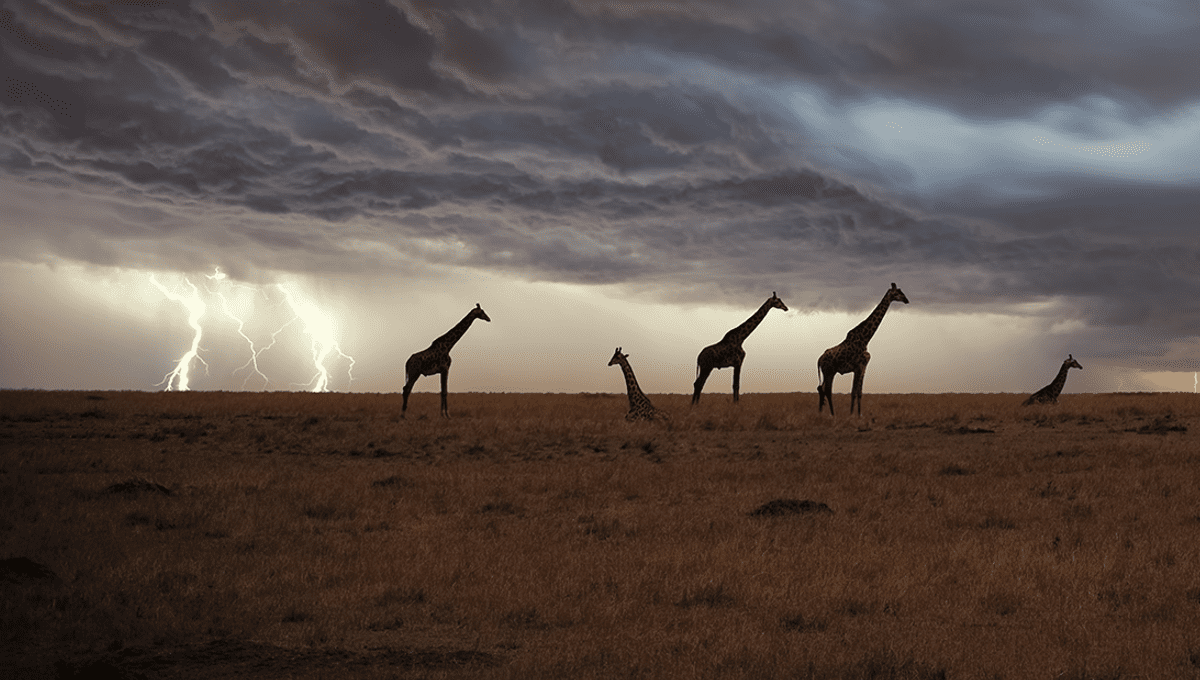
In 2017, a surprisingly popular Reddit post asked the scientists of the site a simple question: Do giraffes get struck by lightning more often than other animals?
Well, not only are there a number of reports out there of giraffes being killed by lightning, there are also case reports which suggest the tall animals can act like lightning rods during a thunderstorm.
The good news for giraffes is that they generally don’t encounter many storms. In fact, there are only five well-documented cases of giraffes being killed by lightning between 1996 and 2010, including one incident of a giraffe being struck in front of Disney World visitors in 2003. According to zoologist Luis Villazon, this is about 0.003 deaths per thousand giraffes per year. The bad news is that this is more than 30 times the fatality rate for humans in the US, where thunderstorms are more common.
In 2020, a report on two fatalities in giraffes at the Rockwood Conservation in South Africa found that one of the animals had likely been struck directly in the skull by lightning.
“Given that lightning bolts tend to hit tall objects, especially in open areas, the height of giraffes may make them particularly vulnerable to fatal electrocution,” Rockwood Conservation scientist Ciska Scheijen wrote in the African Journal of Ecology
“However, they may have behavioural adaptions to reducing chances of mortality from lightning, for example seeking shelter during a thunderstorm or moving quickly to thickly vegetated areas.”
Scheijen adds that observations, particularly in this case, have not confirmed giraffes will seek shelter during thunderstorms.
Unfortunately, giraffes are at another disadvantage to humans when it comes to storms, in that they have four legs. Animals with four legs are more vulnerable to ground current, as the energy spreads along the ground after a strike.
“Lightning goes up one leg and down another. Animals are more vulnerable because their legs are spread out more, so the ground currents travel more easily in their bodies. It doesn’t matter if they’re touching, or exactly how close they are, it matters that they were all in the area hit by lightning,” National Oceanic and Atmospheric Administration lightning expert John Jensenius told The Verge.
“Ground currents are the thing that’s responsible for the most lightning deaths and injuries in both people and animals.”
Ground lightning can cause large numbers of deaths in animals, be it 550 sheep that were caught in a storm in Georgia in 2021, or 323 reindeer killed in Norway in 2016. Giraffes just happen to also be vulnerable to direct lightning strikes as well.
Source Link: Giraffes Really Are More Vulnerable To Lightning Strikes Because Of Their Ridiculous Necks